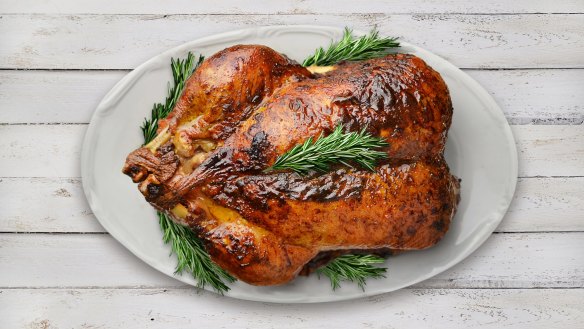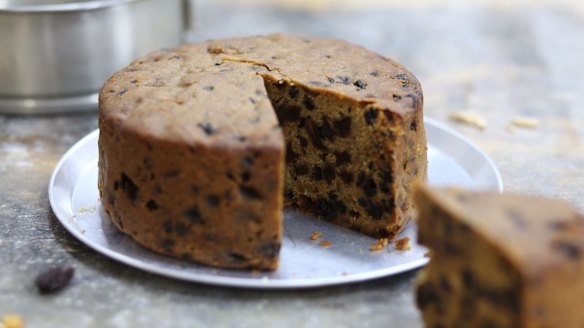How do you really tell when the turkey is fully cooked?

How do I know my turkey is done? C. Sheng
This reminds of the scene in HBO's The West Wing when Martin Sheen's President Jed Bartlett is on the phone to the Butterball hotline to find out how to cook his Thanksgiving turkey without giving his family food poisoning. The woman at the other end of the Butterball hotline says, "The two main bacterial problems are salmonella and campylobacter jejuni". She recommends that President Bartlett cook the raw ingredients for the stuffing to 165 degrees Fahrenheit (74C) before stuffing the turkey. Bartlett shows off his knowledge of USFDA requirements for the turkey to be cooked to a minimum internal temperature of 180F (82C). The operator questions whether the President has an accurate meat thermometer. I was reminded recently by the caring team at Australia's Food Safety Information Council that if you're cooking a turkey – particularly if you're unfamiliar with the process and have elderly or pregnant guests – that you should use a meat thermometer, inserting into the thickest part of the thigh for several seconds, to see if has reached the temperatures above.

I made a Christmas cake and the fruit sank to the bottom. H. Kelly
Dust the fruit in a little plain flour, gently fold into the batter and bake as normal. The flour pulls water from the batter and creates "drag", slowing the downward motion until the batter sets in the oven.
Letters
Recently in this column I recommended using a microwave oven to pre-cook the grated potato for roesti. (I was dismissive of using a microwave because I personally can't stand the things.) This recommendation fomented ire in readers. P. Kay wrote, "My blood pressure shot up when I read your article about how to cook roesti, which began with, 'I hate to say it but the answer is: the microwave'. Why do you 'hate' to say it? Why are cooks and food writers so precious about admitting microwaves are useful for preparing many types of food? Not all food, of course; no one would think of microwaving a roast. But some dishes such as risotto are better made in a microwave than in the traditional way. So why does this weird attitude persist for what is just another useful addition to kitchen equipment?" A. Cory wrote in with, "My Swiss heart stopped when I read your [microwave] instructions for making a crisp roesti! I am sure it will make a nice crisp potato cake, but it isn't roesti! This traditional Swiss dish requires a bit more patience. Boil whole potatoes in their skin until barely cooked. Australian nicola potatoes seem work best. Refrigerate the cooked potatoes overnight. Peel the potatoes and grate on the coarsest grater you can find (a roesti grater is best). Heat some lard or duck fat (or for a healthy but less original option use olive oil) in a heavy frying pan and fry the potatoes as you described."
Send your vexing culinary conundrums to brainfood@richardcornish.com.au or tweet to @realbrainfood.
Appears in these collections
- More:
- Food
- Brain food
